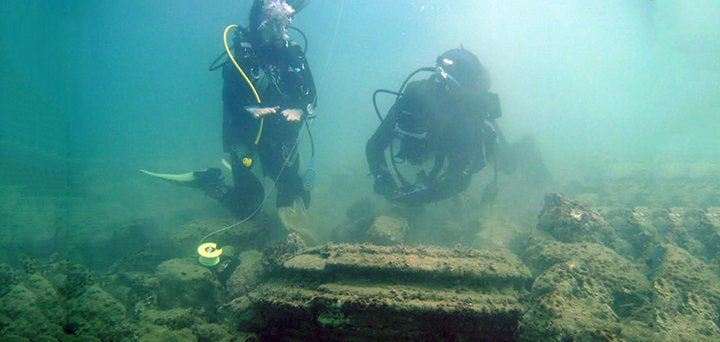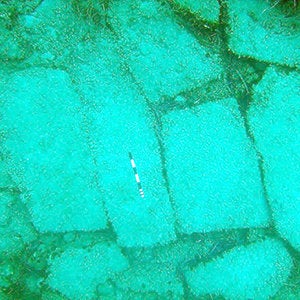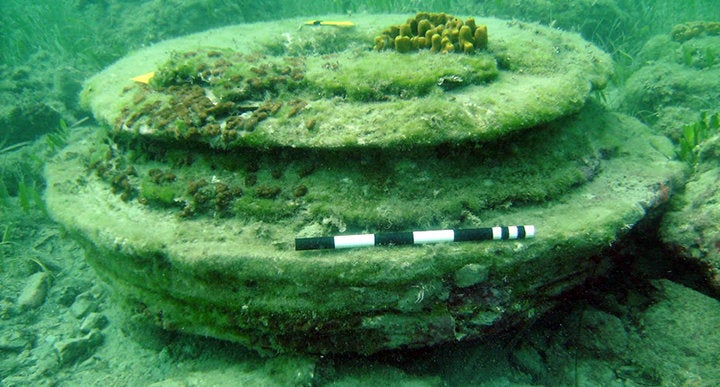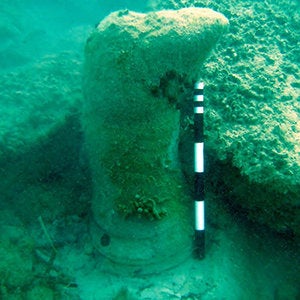Divers were thrilled when they first discovered what they thought were the remains of an ancient sunken city off the coast of a Greek island - but it now appears that all was not what it seemed.
What was thought to be paved flooring, colonnades and circular column bases were discovered in the waters surrounding the holiday island of Zakynthos in 2013.

Divers believed the structures were the remains of a lost city, the inhabitants of whom perished when a tidal wave hit the island.
But mysteriously, there were no signs of life such as pottery or other artefacts.
It is only now that the truth behind the “lost city”, near Alikanas Bay, has in fact been revealed.

According to new research published by the University of East Anglia (UEA), the formations were actually created by nature.
Professor Julian Andrews, from UEA’s School of Environmental Sciences, said: “The site was discovered by snorkelers and first thought to be an ancient city port, lost to the sea.
"There were what superficially looked like circular column bases, and paved floors. But mysteriously no other signs of life – such as pottery.”

He continued: “We investigated the site, which is between two and five meters under water, and found that it is actually a natural geologically occurring phenomenon.
“The disk and doughnut morphology, which looked a bit like circular column bases, is typical of mineralization at hydrocarbon seeps - seen both in modern seafloor and palaeo settings.
“We found that the linear distribution of these doughnut shaped concretions is likely the result of a sub-surface fault which has not fully ruptured the surface of the sea bed. The fault allowed gases, particularly methane, to escape from depth.”

To those of us who aren’t experts, that basically means it was an ancient gas leak.
Andrew added: “This kind of phenomenon is quite rare in shallow waters. Most similar discoveries tend to be many hundreds and often thousands of meters deep underwater.”
